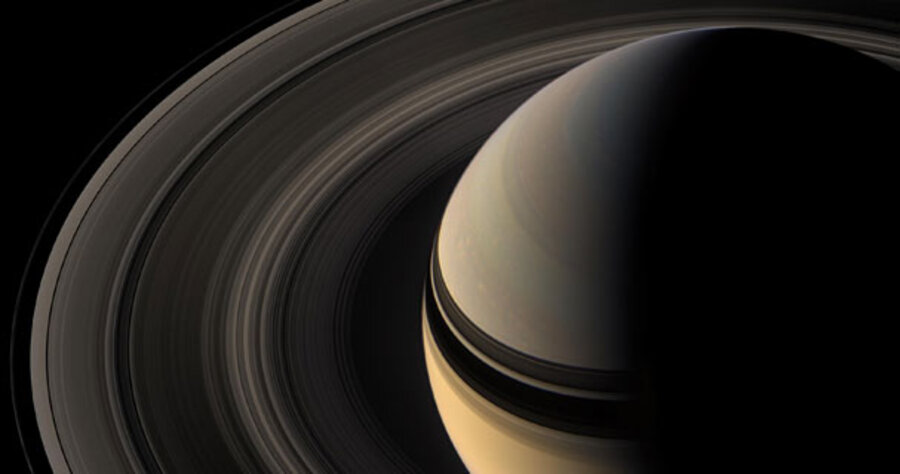Saturn’s rocky F ring
Loading...
If you want to watch the kind of processes that helped shape the planets, you may find no better laboratory than Saturn’s F ring.
Astronomers using images captured by the Cassini orbiter in 2006 and 2007 report clear evidence of collisions and clumping of material in this narrow ring, a wisp of material encircling Saturn some 2,000 miles beyond the planet’s main ring system. Previous images of the F ring strongly suggested that gravitational interactions plus collisions were responsible for its spiral shapes as well as other odd structures. But outside of Prometheus, one of the ring’s two “shepherding” moons, the key players and their interactions were largely unknown, according to the team from the University of London and the University of Paris.
The team says it found jets of material leaving the ring, evidence of collisions involving objects up to six miles across that travel within the ring’s 25-mile-wide core. The team found features in the images that testify to the gravitational effects of smaller objects.
The finding builds on initial hints from one of Cassini’s other instruments that the F ring hosts objects ranging in size from 88-feet wide to nearly six miles across, orbiting Saturn within six miles of the F ring’s core. The evidence suggests that large-scale collisions – with objects smacking into each other at interstate speeds – happen daily. Scientists say these processes happened on a far grander scale when the solar system was formed some 4.6 billion years ago.
The Pioneer 11 spacecraft discovered the F ring when it sped by the planet in December 1974. The latest results appear in the current issue of the journal Nature.





